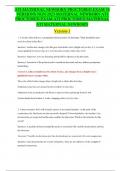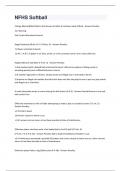Exam (elaborations)
2023 Ati maternal newborn proctored exam 38 versions ngn 2023 maternal newborn ati proctored exam ati proctored maternal newborn exam real practice exam A+
- Course
- Institution
2023 Ati maternal newborn proctored exam 38 versions ngn 2023 maternal newborn ati proctored exam ati proctored maternal newborn exam real practice exam A+
[Show more]




